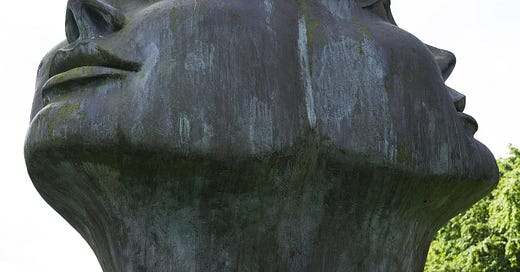That's Not Who They Really Are
and other excuses I've given to avoid seeing someone's true character
I read the words of the article.
My stomach dropped.
“According to interviews with nearly two dozen current and former employees of his Nashville-based Lampo Group, Ramsey has engaged in what they describe as an increasingly paranoid campaign to identify and silence several critics”. . . “Bizaare episodes allegedly involving online spying, gag orders, random firings, and offers of large cash bounties for information have created a climate of fear inside the Lampo headquarters. . .” 1
I assured myself and those who might ask, “They don’t know Dave like we do. That’s not who he really is.”
They didn’t see how he got teary when sharing about helping a single mom. They didn’t see the good he was doing behind the scenes. Why didn’t the article mention those things?
Still, I felt a low-level buzzing anxiety I couldn’t shake.
What was I supposed to do with the knowledge that both versions of this man existed?
Which person was he?
I attended the annual Ramsey Battle of the Bands competition that month and noticed an armed security guard standing outside the entrance- A perfect example of how much of a threat it was to the company that someone would publish critical words about it.
Dave was under attack.
We were under attack.
11 years later, when I hear people say words like the ones I used in May 2014 to defend the actions of my husband’s now-former employer, I want to respond by asking this: What would it cost to believe this person could be kind and generous sometimes and cruel and abusive other times?
Are you allowed to consider that, and what does it mean if you aren’t?
Image by Frederic Willocq from Pixabay
What if that person is both of those things?
Who someone truly is can’t just be what I want to be true- the good or the bad.
Living in community with others is tricky for this very reason. It’s a very rare situation in which the person I have a painful interaction with is 100% evil. The most painful situations are the ones where it’s not allowed to honestly reckon with the unhealthy patterns or harm caused by someone.
And yet, this is exactly how it plays out in so many of our communities.
The CEO of the company you admire publicly shames his employees.
The ministry leader who dedicates their time to teaching and mentoring is spiritually abusive to those who say they can’t serve in ways they think they should.
The person you admire was a jerk to someone.
Who is the real CEO?
Which person is the real ministry leader?
Is that person really a jerk?
We can’t find the answer in communities that refuse to allow questions.
What do we do with this?
Wouldn’t it be nice to have a simple solution to this?
“Believe the best” isn’t sufficient, and “believe the worst” isn’t either.
I’d love to sit with you and hash out the complexities of trying to be people of integrity who care about those harmed while resisting lumping every person who has ever made a bad choice into the same category as abusers.
Because they aren’t the same. Both situations require thoughtful attention, but they don’t necessarily lead to the same next right thing.
Emily P. Freeman talks about how often there are arrows pointing toward our next right decision if we’re paying attention. I think the same is true when it comes to discerning character and what is required of us.
Where Are The Arrows Pointing?
I find these questions helpful. Maybe you will, too:
=> Is there a pattern emerging?
=> Am I allowed to bring up concerns about something I hear or observe that troubles me?
=> Does the person/community see criticism as an attack?
=> Does this require something of me?
=> Is this a one-off?
=> How can I pay attention to what I need to see?
=> Am I dismissing red flags because of some good that comes from someone’s work?
=> Is the good I see possibly being performed strategically to win me over? How would I know?
=> Is there a way I can process this in a way that does no harm?
It took 5 years after reading that article to be willing to ask myself these questions and honestly answer them. I hated where the arrows were pointing.
There was no ambiguity.
Sometimes facing the truth requires something that feels impossible, but the truth always leads toward something more whole and beautiful.
Both things are true.



